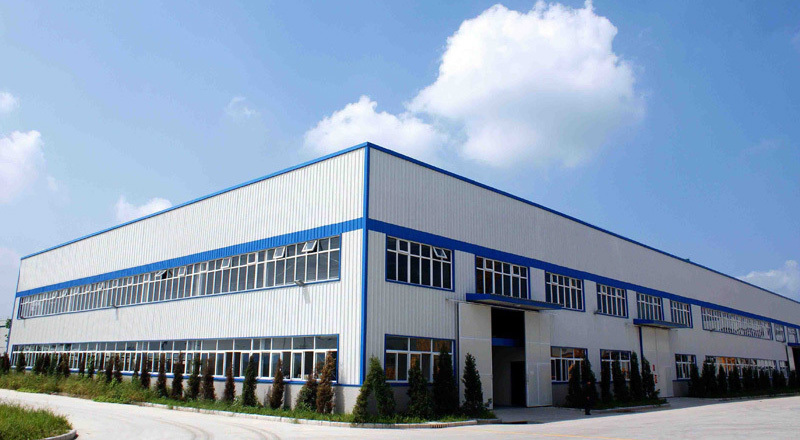News center

Application field of hardware stamping parts
(1) Stamping in the automotive industry. Mainly focused on deep drawing. In this part of our country, it is mainly concentrated in large factories such as automobile factories, tractor factories, and aircraft manufacturing factories, and independent large-scale stamping and deep drawing factories are still rare. (2) Stamping for automotive and other industry components. Mainly formed by punching and shearing. Many of the enterprises in this department are located in standard parts factories, as well as some independent stamping factories. Currently, there are many such small factories near some automobile or tractor factories. (3) Electrical parts stamping factory. This type of factory is a new industry that has developed with the development of electrical appliances, with factories mainly concentrated in the south. (4) Daily necessities stamping factory. Making some handicrafts, tableware, etc., these factories have also made significant development in recent years. (5) Home appliance component stamping factory. These factories only emerged after the development of household appliances in China, with most of them distributed within household appliance enterprises. (6) Special stamping enterprises. Enterprises such as stamping of aviation parts belong to this category, but these process factories are also included in some large factories.
2023-03-13

The difference between stainless steel and stainless iron
Stainless steel is generally the general term for stainless steel and acid resistant steel. Stainless steel refers to steel that is resistant to weak media corrosion such as atmosphere, steam, and water, while acid resistant steel refers to steel that is resistant to chemical corrosive media such as acid, alkali, and salt. Stainless steel has a history of over 90 years since its introduction at the beginning of this century. The invention of stainless steel is a significant achievement in the history of world metallurgy, and its development has laid an important material and technological foundation for the development of modern industry and technological progress. There are many types of stainless steel with different properties, and it has gradually formed several major categories during its development. According to organizational structure, it can be divided into four categories: martensitic stainless steel (including precipitation hardening stainless steel), ferritic stainless steel, austenitic stainless steel, and austenitic plus ferrite dual phase stainless steel; Classified according to the main chemical composition or some characteristic elements in steel, it can be divided into chromium stainless steel, chromium nickel stainless steel, chromium nickel molybdenum stainless steel, as well as low-carbon stainless steel, high molybdenum stainless steel, high purity stainless steel, etc; According to the performance characteristics and uses of steel, it is classified into nitric acid resistant stainless steel, sulfuric acid resistant stainless steel, pitting resistant stainless steel, stress corrosion resistant stainless steel, high-strength stainless steel, etc; According to the functional characteristics of steel, it is classified into low-temperature stainless steel, non-magnetic stainless steel, easy cutting stainless steel, superplastic stainless steel, etc. The commonly used classification method at present is based on the structural characteristics and chemical composition characteristics of steel, as well as a combination of the two methods. It is generally divided into martensite stainless steel, ferritic stainless steel, austenitic stainless steel, duplex stainless steel and precipitation hardening stainless steel, or into chromium stainless steel and nickel stainless steel. (Introduction: Exploring the Internal "Reasons" for the Disadvantageous Future of Fastener Manufacturers in the Industry) Stainless steel is generally used in corrosion-resistant environments, as well as medical devices and daily necessities. The so-called "stainless iron" refers to the process of recycling waste iron, lead, steel, etc. through secondary furnace processing, and then removing the "rust" from them. The traditional detection method is to use iron absorption stone, but this product cannot be distinguished using traditional methods. Naturally, it is a secret and has deceived many engineering materials. Therefore, Tang Baihuang's land has entered one decoration site after another, climbing onto one luxurious curtain wall after another. This name was born after the exposure of Focus Interview and holds approximately 65% of the market share, while the true national standard SUS304 stainless steel product has no market due to its high price. At present, the price of "stainless steel" products plays an important role in owning 65% of the market share. Currently, the price of national standard stainless steel products is about 20000 yuan per ton, and the price of national standard 7075 aluminum alloy is about 16000 yuan per ton, while the price of "stainless steel" is only 5000-7000 yuan per ton; Furthermore, the tensile strength of these three materials is: national standard stainless steel 530-620MPa, national standard 7075 aluminum alloy 540-560MPa, and "stainless iron" 160-180MPa. Obviously, the tensile strength of "stainless steel" cannot reach one-third of that of stainless steel, which is highly susceptible to accidents.
2023-03-13

Design principles of hardware stamping parts
The designed hardware stamping parts must meet the product's usage and technical performance, and be easy to assemble and repair. The designed stamping parts must be conducive to improving the utilization rate of metal materials, reducing the variety and specifications of materials, and minimizing material consumption as much as possible. If possible, use low-cost materials to achieve scrap free and minimal cutting of parts. The designed stamping parts must have a simple shape and reasonable structure, which is conducive to simplifying the mold structure and simplifying the number of processes, that is, using the least and simplest stamping processes to complete the entire part processing, reducing the use of other methods for processing, and is conducive to stamping operations, facilitating the organization of mechanized and automated production, and improving labor productivity. Under the condition of ensuring normal use, the designed stamping parts should strive to have lower requirements for dimensional accuracy and surface roughness, and be conducive to product exchange, reducing waste and ensuring stable product quality. The designed stamping parts should be conducive to using existing equipment, process equipment, and processes as much as possible to process them, and be conducive to extending the service life of the stamping die.
2023-03-13

